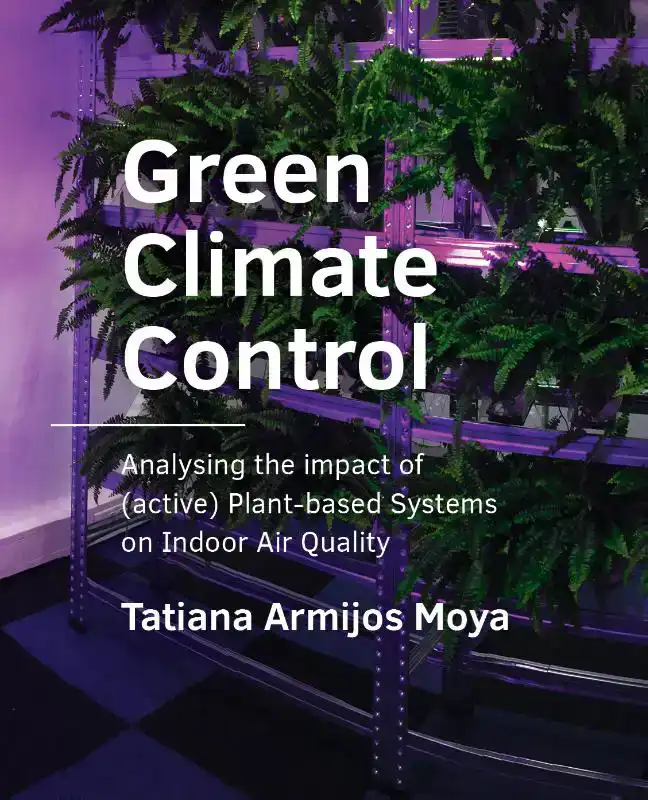- Engels
- Pockets
- kunst algemeen
- bouwkunst, archit.
- GREEN CLIMATE CONTROL
ARMIJOS MOYA, TATIANA
GREEN CLIMATE CONTROL
19,95incl BTW
Vertrouwd sinds 1927
Persoonlijke aandacht en advies
Vanaf 17,50 gratis verzenden NL & BE
Meer dan 150.000 artikelen online
Omschrijving GREEN CLIMATE CONTROL
Several studies have demonstrated the potential of botanical biofiltration and phytoremediation to remove indoor pollutants and improve overall comfort. However, there is a lack of evidence on how indoor greenery affects the Indoor Environmental Qual
ity (IEQ), particularly on Indoor Air Quality (IAQ). The main goal of this research project was to explore and evaluate the efficacy of an active plant-based system in terms of IAQ and being able to answer the main research question: "Can an active p
lant-based system improve the Indoor Air Quality (IAQ)?" This was achieved through laboratory studies of several plant-based systems, including chemical, physical and sensorial evaluations as well as qualitative and quantitative assessments. Some of
the outcomes of this research are described below:
- To develop an effective plant-based system the proper selection of its components is essential.
- In real settings, the concentration of the gaseous pollutants is present in lower lev
els and current equipment are not able to detect them. Therefore, it is clear and confirmed that physical, chemical and sensory assessments are crucial to evaluate the real impact of plant-based system in the IAQ.
- In this project, different sub
strates and plants were tested and it became clear that the substrate is an important ally in reducing gaseous pollutants, such as formaldehyde.
- The polluted air needs to be transported to the vicinity of the plant-based system to be able to u
ptake the gaseous pollutant. Therefore, an active plant-based system is needed to potentialize the impact of such systems in the IAQ since the air has to be forced to go through the system to achieve the biofiltration process.
- An indoor forest
is required to meet the minimum standards for ventilation rates in breathing zones just with plants without any extra mechanical ventilation.
ity (IEQ), particularly on Indoor Air Quality (IAQ). The main goal of this research project was to explore and evaluate the efficacy of an active plant-based system in terms of IAQ and being able to answer the main research question: "Can an active p
lant-based system improve the Indoor Air Quality (IAQ)?" This was achieved through laboratory studies of several plant-based systems, including chemical, physical and sensorial evaluations as well as qualitative and quantitative assessments. Some of
the outcomes of this research are described below:
- To develop an effective plant-based system the proper selection of its components is essential.
- In real settings, the concentration of the gaseous pollutants is present in lower lev
els and current equipment are not able to detect them. Therefore, it is clear and confirmed that physical, chemical and sensory assessments are crucial to evaluate the real impact of plant-based system in the IAQ.
- In this project, different sub
strates and plants were tested and it became clear that the substrate is an important ally in reducing gaseous pollutants, such as formaldehyde.
- The polluted air needs to be transported to the vicinity of the plant-based system to be able to u
ptake the gaseous pollutant. Therefore, an active plant-based system is needed to potentialize the impact of such systems in the IAQ since the air has to be forced to go through the system to achieve the biofiltration process.
- An indoor forest
is required to meet the minimum standards for ventilation rates in breathing zones just with plants without any extra mechanical ventilation.
Specificaties
- MerkBK Books
- GroepKUNST ALGEMEEN (640)
- Barcode9789463664776
- LeverstatusActief
Reviews
0.0/5.0
Gemiddelde uit 0 reviews
Meest behulpzame reviews
Nog geen reviews geschreven


